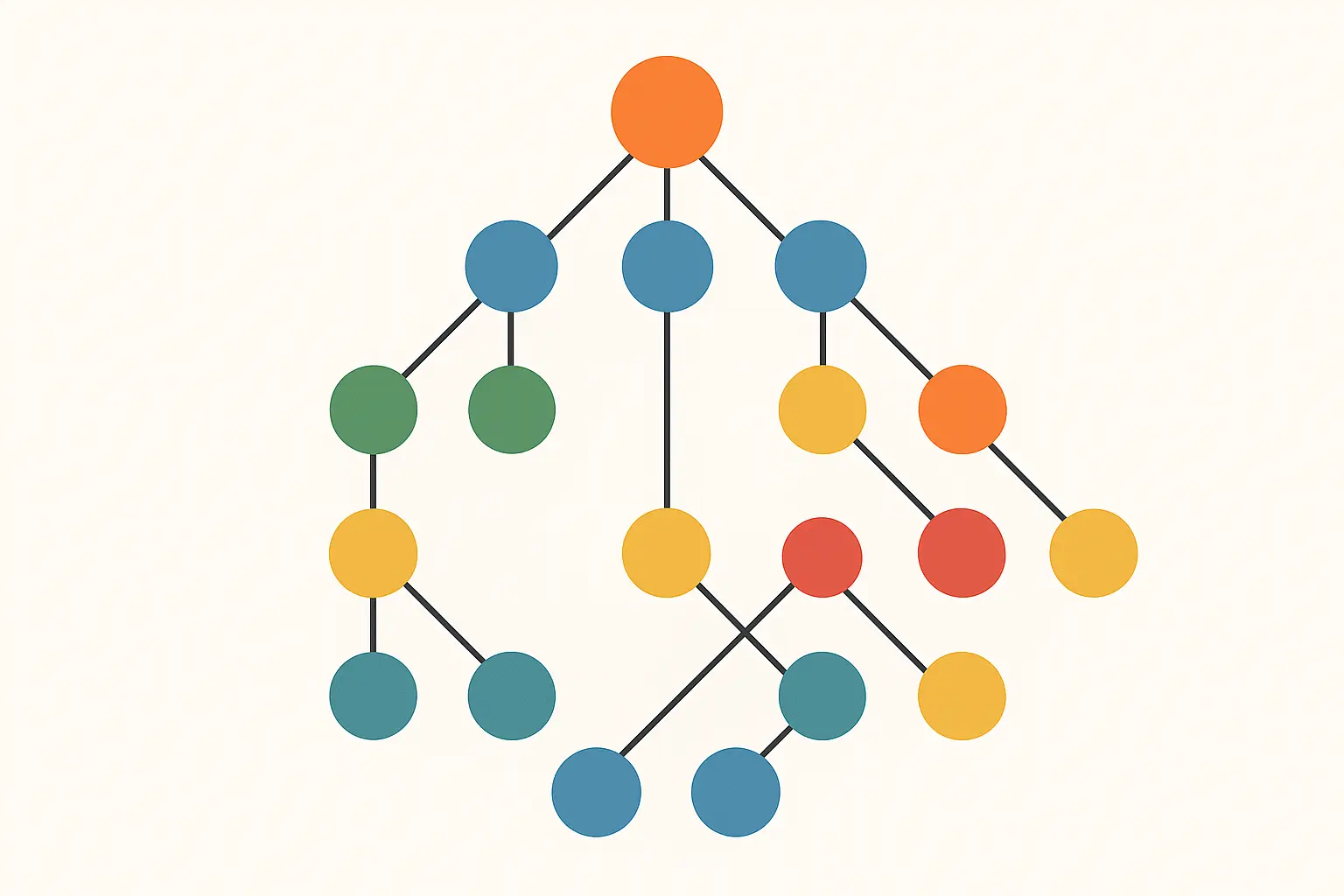When my colleague Sarah passed unexpectedly last year, I found myself staring at a blank document at 2 AM, wondering how to capture 15 years of shared coffee breaks, late-night project pushes, and mentoring moments in a five-minute speech that would resonate with everyone from the CEO to the summer interns. Writing a eulogy for a colleague turned out to be one of the most challenging yet meaningful tasks I’d ever faced in my professional life.
Quick Resource:
Create a polished workplace tribute with the Colleague Eulogy Generator.
As someone who has written over 100 eulogies for people all around the world according to bestselling author Jen Glantz, I understand that creating a professional tribute requires a completely different approach than family eulogies. You’re not just honoring someone’s memory – you’re speaking to an audience where some people worked alongside them daily while others only knew them from quarterly reports.

TL;DR
- Professional eulogies balance career achievements with the person behind the job title
- Your audience ranges from close work friends to distant colleagues and family members
- Collect stories from multiple colleagues to show different sides of who they were
- Focus on character traits that showed up consistently, not just accomplishments
- Practice your delivery – professional memorial services have unique dynamics
- Aim for 3-5 minutes and coordinate with other speakers
- Use inclusive language that works for everyone in the room
Why Colleague Eulogies Feel So Different
Here’s the thing about writing a eulogy for a colleague – you can’t rely on shared family memories or intimate personal details. Instead, you’re working with workplace interactions, project collaborations, and professional relationships that span everything from daily coffee chats to annual performance reviews.
The recent passing of Dr. Nolan Williams, a renowned Stanford University psychiatrist at age 44, highlights how professional communities must come together to honor colleagues who made significant contributions to their fields. His colleagues faced the challenge of eulogizing both his groundbreaking work in depression therapy and his role as a mentor and team member.
The person sitting in the front row might’ve worked alongside your colleague for twenty years, while someone in the back only knew them from quarterly meetings. This reality shapes every word choice you make, especially when you’re trying to honor someone’s professional legacy while revealing the human being behind the job title.
Find the right balance with the Colleague Eulogy Generator.
When learning how to structure professional tributes effectively, I discovered that successful professional eulogies focus on character traits that showed up consistently at work. Not their job description, but how they approached challenges, treated team members, or the values that guided their professional decisions.
According to eulogy writing experts, professional memorial services typically aim for about 5-7 minutes of speaking time, which forces you to be selective about what really matters.
Finding the Person Behind the Professional
Your colleague wasn’t just their job title or list of accomplishments. They brought their whole personality to work, and that’s what people remember most.
I realized everyone had the same story about Tom – he was the guy who’d stay late to help you figure out that impossible spreadsheet, then make sure you got the credit in Monday’s meeting. These details matter because they show who your colleague was as a person, not just what they achieved professionally.
The trick is weaving these personal touches into professional contexts. Instead of just saying “Sarah was kind,” you share how she stayed late to help struggling team members meet deadlines, then made sure they got credit for the final results.

Reading the Room: Your Mixed Audience
Professional memorial services can feel overwhelming when you consider the complex social dynamics. You’ll have everyone from the person who sat next to them for 10 years to someone who only knew them from quarterly reports. Each group brings different expectations and different memories.
The marketing director who worked with them daily wants different stories than the family members who never saw their work side. Some want to hear about professional achievements and industry impact, while others connect more with stories about mentorship and daily interactions.
You can’t make everyone happy, and that’s okay. The solution is finding things everyone can relate to – character traits that showed up whether someone worked with them daily or saw them once a month in meetings.
Choosing Your Words Carefully
Professional settings demand more formal language than family eulogies, but you don’t want to sound robotic. Words like “dedicated,” “innovative,” and “collaborative” work well because they’re professional yet warm.
Here’s what I learned the hard way: avoid inside jokes or references that exclude parts of your audience. That hilarious story about the office prank might be perfect for the team happy hour, but it could fall flat (or worse, seem inappropriate) in a memorial service.
I started testing my language choices by asking: “Would this make sense to someone who didn’t work directly with them?” If the answer was no, I either explained the context or chose a different example.
Choose inclusive language effortlessly using the Colleague Eulogy Generator.
The Professional-Personal Balance
The most effective colleague eulogies show how personal values influenced professional behavior. This approach honors both sides of who they were without crossing inappropriate boundaries.
Instead of sharing details about their family life, you might mention how their dedication to family influenced their supportive management style. Or how their love of learning drove them to share knowledge generously with colleagues.
For example: Instead of saying “Mark was a devoted father who never missed his daughter’s soccer games,” try “Mark’s commitment to family showed up in how he mentored junior staff – he approached their development with the same patience and investment he brought to everything important in his life.”
Gathering Stories That Actually Matter
I started by texting our old team group chat, then realized I needed perspectives from other departments too. Sarah had mentored people I’d never even met.
Don’t limit yourself to your immediate team when collecting stories. Your colleague’s impact likely extended across departments, hierarchy levels, and even different time periods of their career. Start with people who worked closely with them, but also reach out to colleagues from other departments, former team members who’ve moved on, and even clients or vendors who had regular contact.
Organize cross-department stories with the Colleague Eulogy Generator.

Asking the Right Questions
Instead of just “tell me about working with them,” try specific questions: “Can you think of a time when they went above and beyond?” or “What was their approach when projects got stressful?”
The best professional stories often involve how someone handled challenges, supported colleagues, or approached their work with distinctive values or methods. These stories work because they show character in action rather than just listing achievements.
Drawing from meaningful workplace quotes and memories, avoid anything controversial, overly personal, or that might make attendees uncomfortable. If you’re unsure about a story, ask yourself whether it would make their family proud and whether it adds something meaningful to your tribute.
Organizing What You Collect
I organized stories by themes – leadership moments, mentorship examples, team contributions, and character demonstrations. This helped me see patterns in how different people experienced my colleague.
Maybe everyone mentions their calm presence during crises, or multiple people share examples of their generous mentoring style. Having stories organized by theme also makes it easier to select the best examples when you’re writing.
Story Collection Categories:
- Leadership Moments: “During the Q3 crisis, Sarah stayed until midnight for three straight days, working on technical issues while checking in on each team member’s wellbeing and workload.”
- Mentorship Examples: “Tom created ‘Coffee & Code’ sessions every Friday morning where junior developers could bring any question without judgment.”
- Character Demonstrations: “Even during her busiest weeks, Maria always took time to celebrate team birthdays with handwritten notes and small thoughtful gifts.”
Writing Your Speech (Without Sounding Like a Performance Review)
The tricky part is organizing all these memories and insights into something that flows naturally and feels genuine rather than like a corporate presentation.
Opening Strong
Your opening needs to accomplish several things quickly: establish who you are, clarify your colleague’s role, and immediately humanize them for the audience.
I found it works well to start with your relationship to them and their position, then immediately follow with a character observation or brief story that captures their essence. For example: “I worked alongside Maria for eight years, watching her grow from a junior analyst to our department’s most trusted project leader. What struck me from day one wasn’t just her analytical skills – it was how she could explain complex data in ways that made everyone feel included in the conversation.”
Turn strong openings into a full speech with the Colleague Eulogy Generator.
Organizing the Career Journey
You have two main options for organizing their professional story: chronologically (following their career progression) or thematically (focusing on different aspects of their professional character).
Chronological works well when someone had clear career growth or interesting transitions. Thematic works better when you want to highlight specific qualities that showed up consistently throughout their career.
Either way, focus on 3-4 major points rather than trying to cover everything. This constraint forces you to select only the most meaningful content and keeps your speech focused and memorable.
Making It Human
The strongest colleague eulogies reveal personal qualities through workplace interactions. Show how their integrity showed up in how they handled difficult client situations, or their sense of humor helped teams navigate stressful deadlines.
Instead of saying “they were dedicated,” tell the story of them working through the weekend to ensure a project’s success while making sure their team got proper recognition. This shows dedication while revealing their values about teamwork and recognition.

Actually Giving the Speech
Professional memorial services have unique dynamics that require adjusted delivery approaches. Your audience includes varied hierarchy levels and relationship depths, so you need inclusive presentation techniques.
The recent memorial service for former President Jimmy Carter demonstrated how multiple speakers can work together effectively. President Biden — a longtime friend and colleague of the 39th president — addressed the cathedral in a eulogy for Carter alongside family members and other colleagues, each offering complementary perspectives on his life and legacy.
Managing the Mixed Crowd
Make eye contact with different sections of the audience, use inclusive gestures, and speak clearly for those who may not have known your colleague personally but want to pay respects.
Remember that some attendees are there out of professional obligation rather than personal connection. Your job is to help them understand why your colleague mattered, rather than just honoring someone they already knew well.
Handling Your Emotions
It’s completely acceptable to show emotion in professional eulogies – in fact, it helps humanize your tribute. But you need to maintain enough composure to complete your speech effectively.
Practice your eulogy multiple times so the content becomes familiar enough that you can continue even if emotions overwhelm you temporarily. Have water available, and consider asking a trusted colleague to be ready to step in if needed.
Working with Time Limits
Professional memorial services often have stricter time limits than family services. Aim for 3-5 minutes maximum, which means focusing on 2-3 main themes rather than trying to cover everything.
This constraint actually helps create better eulogies because it forces you to select only the most impactful and meaningful content. Practice with a timer to ensure you’re within limits.
Coordinating with Other Speakers
Professional memorials often feature multiple speakers, so coordinate to ensure complementary rather than overlapping content. If someone else is covering their early career, you might focus on recent achievements or their impact on team culture.
Brief coordination conversations with other speakers can help you divide themes effectively and create a more comprehensive tribute overall.
Keep messages cohesive across speakers using the Colleague Eulogy Generator.

Making It Stick: Advanced Techniques
After writing this eulogy and helping three other colleagues with theirs, I’ve learned that the most memorable tributes tell a story rather than just list facts.
Creating a Narrative Arc
Structure your tribute around your colleague’s professional journey, showing how early experiences shaped later achievements and character development. Maybe they started as a detail-oriented analyst and grew into a visionary leader, maintaining that attention to detail while developing strategic thinking.
You can also structure around impact amplification – showing how their mentorship of one person led to that person mentoring others, or how their innovative process improvement influenced company-wide practices.
Narrative Example:
“When Jennifer joined our team five years ago as a junior developer, she asked more questions in her first week than most people ask in a month. That curiosity never faded – it evolved. As she grew into a senior architect, those same questions became the foundation for the innovative solutions that transformed how our entire company approaches user experience design.”
Building Emotional Connection
Connect to shared professional experiences that most attendees can relate to. Reference common workplace challenges like tight deadlines, difficult clients, or organizational changes, then show how your colleague handled these situations with grace, humor, or wisdom.
Most professionals have faced similar situations, so they can connect with both the challenge and your colleague’s distinctive approach to handling it.
Using Professional Language Effectively
Incorporate relevant professional terminology naturally – perhaps they “architected solutions,” “cultivated relationships,” or “championed initiatives.” This shows respect for their professional expertise while keeping language understandable.
Extended metaphors can help organize complex professional lives into understandable narratives. Maybe they were a “bridge-builder” who connected different departments, or a “lighthouse” who guided others through challenging projects.

Recent workplace challenges are highlighted by situations like the one described in advice columns, where a retired professor after 40 years of teaching was asked to eulogize a difficult former colleague, demonstrating the complex dynamics that can exist in professional relationships. For guidance on handling such challenging situations, celebration of life speeches for colleagues can provide alternative approaches to honoring difficult professional relationships.
Adapting to Your Workplace Culture
Different professional fields have distinct cultures and expectations for memorial services. Healthcare professionals might appreciate stories about patient advocacy, while educators might resonate with stories about student impact.
Technology professionals might value innovation stories, while financial professionals might appreciate tales of ethical decision-making. Understanding your industry’s values helps you select the most resonant themes and examples.
Consider your organization’s typical communication style and recent memorial services to gauge expectations. Some companies prefer structured presentations, while others embrace more personal storytelling approaches.

Your Step-by-Step Action Plan
Transform these insights into actionable steps through systematic preparation and structured writing processes.
Information Gathering Phase
Create specific categories for collecting information: career milestones, character traits, mentorship examples, team contributions, and personal qualities that showed up at work. Interview colleagues systematically, asking targeted questions about each category.
Verify professional details with HR records, LinkedIn profiles, or trusted colleagues. Getting dates, titles, and achievements right shows respect and prevents awkward corrections during the service.
Professional Eulogy Preparation Checklist:
- Contact 5-7 colleagues from different departments/levels
- Verify key career dates and achievements
- Collect 3-4 specific anecdotes demonstrating character
- Identify 2-3 major professional themes
- Coordinate with other speakers on content division
- Practice delivery 3+ times with timer
- Prepare backup materials and contingency plans
Build your draft now with the Colleague Eulogy Generator.
Managing the Writing Process
Set specific writing times when you feel emotionally stable. Writing about a deceased colleague while managing your own grief requires emotional regulation strategies.
Break the writing into multiple short sessions rather than trying to complete everything in one sitting. Take breaks when you feel overwhelmed – sometimes stepping away and returning with fresh perspective helps you write more effectively.
Revision and Practice Strategy
Use multiple revision rounds focusing on different elements. First revision: content accuracy and completeness. Second revision: language refinement and flow. Third revision: delivery practice and timing.
Read your drafts aloud during revision. This helps you catch awkward phrasing, check timing, and practice emotional management before the actual delivery.
Practice in front of mirrors to work on eye contact, record yourself to check pacing and clarity, and do run-throughs with trusted colleagues for feedback.
How Eulogy Generator Can Help
When I was struggling with that blank document at 2 AM, I wished I had a structured way to organize all the swirling thoughts and memories about Sarah. Writing a eulogy for a colleague presents unique challenges that generic writing tools can’t address.
Eulogy Generator understands the delicate balance required between professional respect and personal warmth that makes colleague eulogies effective. Instead of starting with a blank page, you’ll answer targeted questions that help you identify the most meaningful professional stories and character traits.
Structured Guidance for Professional Tributes
The platform guides you through an interactive process specifically designed for workplace memorial situations. This structured approach is particularly valuable when you’re dealing with the emotional stress of losing a colleague while trying to create a tribute that honors both their professional achievements and personal character.
Professional relationships exist on a spectrum from casual workplace acquaintances to close mentors and friends. The tool’s personalized questions help you identify which stories and memories are most suitable for your specific relationship with the deceased and the diverse audience you’ll be addressing.
Whether you’re honoring a long-time mentor, a close peer, or someone you knew primarily through meetings and projects, the platform helps you find the right tone and content that feels authentic to your experience while remaining appropriate for the professional setting. For additional inspiration, you can also explore professional colleague eulogy templates that provide structured frameworks for different workplace relationships.
Ready to create a meaningful tribute that truly honors your colleague’s memory? Visit Eulogy Generator today and our specialized guidance will help you craft a eulogy that balances professional respect with genuine human warmth.

Final Thoughts
Writing a eulogy for a colleague doesn’t have to feel overwhelming when you approach it systematically. The key is remembering that you’re sharing the aspects of their character and contributions that mattered most to the people they worked with, rather than trying to capture their entire professional life.
Focus on the stories that show who they were as both a professional and a person. The best colleague eulogies reveal character through workplace interactions, showing how personal values influenced professional behavior and how individual actions created lasting impact on others.
Your tribute doesn’t need to be perfect – it needs to be genuine. The audience isn’t expecting a polished performance; they’re hoping to hear authentic reflections that help them remember and honor someone who made a difference in their professional lives.
Take your time with the process, lean on colleagues for support and stories, and remember that delivering this eulogy is itself a meaningful way to honor your colleague’s memory and support your workplace community during a difficult time. For additional support and resources, consider exploring comprehensive eulogy writing guides that can help you through every step of this important process.

